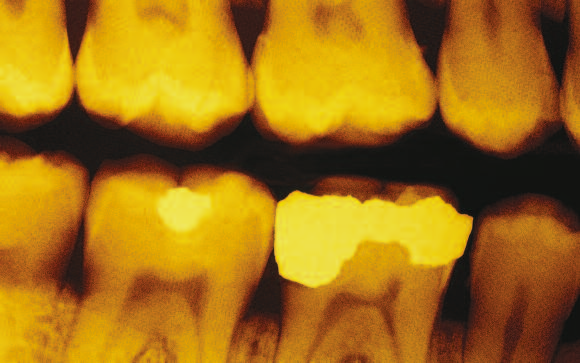Seated in the dentist’s chair, you clamp your teeth and listen for the whir as a machine takes an x-ray of your mouth. The image is acquired in less than a second, but to Boon S. Ooi, associate professor of electrical and computer engineering, the scenario represents outdated 20th-century technology.
Ooi is teaming with researchers at the University of Maryland Dental School and at Northwestern University to develop a technology that will replace x-rays as a method of imaging teeth and gums.
X-rays, as an ionizing radiation source, can harm living tissue, causing DNA damage and mutations. Although dentists use a low radiation density x-ray, they are wary of overexposing patients by taking pictures too often. Ooi’s technology, based on the integration of Optical Coherence Tomography system-on-a-chip, or OCTSOC, uses near-infrared light, which transmits at too small an energy level to harm living tissue or cells.
Optical coherence tomography, which was developed about 15 years ago, has become a popular, noninvasive technique for obtaining high-resolution images of cross-sectional subsurface tissue. But OCT technologies have limitations. They are large, their components are discrete, and they contain just one detecting element. As a result, OCT devices are typically slow, bulky and expensive.
OCT-SOC, says Ooi, will integrate a broadband light source, an interferometry system and micro-spectrometers on a chip measuring 2 mm by 3 mm. Ooi’s OCT-SOC can be batch-fabricated in linear or 2-D arrays, making it possible to obtain an image of teeth structure and gum tissue in real time. This high-speed dental imaging tool is safe, lightweight and low-cost, and can provide a 3-D image with a resolution two orders of magnitude greater than the conventional x-ray technology.
“This is a beautiful and powerful new technology,” says Ooi, who works in Lehigh’s Center for Optical Technologies. “It gives us parallel imaging capabilities instead of imaging one pixel at a time.”
Ooi’s research partner at Maryland is Prof. Linda Otis, the person who first applied OCT to dental imaging.
Ooi collaborates on a separate project with Carl Zeiss Meditec Inc., a German-based international maker of ophthalmology systems, with whom he is developing novel light sources for an ultra-high resolution OCT technique for diagnosing eye diseases.

